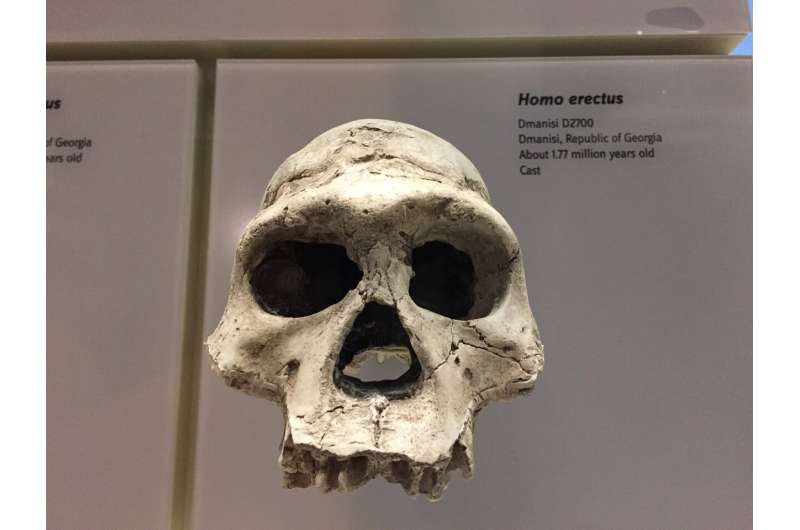This article has been reviewed according to Science X's editorial process and policies. Editors have highlighted the following attributes while ensuring the content's credibility:
fact-checked
proofread
Team publishes study of the brain of the Homo erectus fossil with the lowest cranial capacity

The paleoneurologist Emiliano Bruner and the archaeologist Sileshi Semaw, both from the Centro Nacional de Investigación sobre la Evolución Humana (CENIEH), have published a paper in the American Journal of Biological Anthropology about the 1.5 million-year-old cranium DAN5/P1, found at the Gona site in Ethiopia, whose cranial morphology indicates that it belongs to the species Homo erectus, and in particular, to its earliest African stage, where it is sometimes identified using the name H. ergaster.
The results of the study of this fossil, which is very small for these hominin groups, suggest that its cerebral morphology does not present any traits distinctive to the human genus: Its proportions are similar to those of australopiths, or species whose evolutionary position and whether they are from our own lineage remains to be determined, as is the case with H. habilis.
"The DAN5/P1 skull is rounder and less elongated than what we observe in later individuals of H. erectus, but this is likely due to the architecture of the cranium, and not to certain proportions in the cerebral cortex," says Bruner.
This analysis confirms that there is still no evidence of a clear boundary for the origin of brain anatomy in the human genus, at least in view of the current fossil record. Most of the differences in brain anatomy between the earliest human species, and indeed even when humans and australopiths are compared, are basically associated to differences in the average size of the encephalon.
The difficulty in finding brain traits associated with the evolution of the genus Homo, other than size, might arise out of the absence of macroscopic differences in the cortex, the limitations of the fossil samples, or how hard it is to interpret the morphology of the brain from the internal traces left on the cranium.
"Naturally, this does not preclude the possibility that the origin of the human brain might be related to changes that cannot be detected in the overall anatomy, such as the changes that occur at the level of cells and tissues, neural connections, or neurotransmitters," adds Bruner.
This study was conducted in collaboration with Columbia University (New York), Midwestern University (Glendale), Southern Connecticut State University (New Haven) and the Stone Age Institute (Gosport), all in the United States. In 2020, the same team published a complete study of the cranium of the same individual.
More information: Emiliano Bruner et al, The endocast from Dana Aoule North ( DAN5 / P1 ): A 1.5 million year‐old human braincase from Gona, Afar, Ethiopia, American Journal of Biological Anthropology (2023). DOI: 10.1002/ajpa.24717
Provided by CENIEH





















